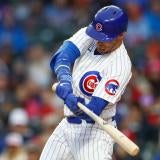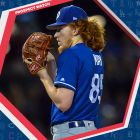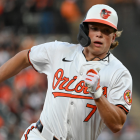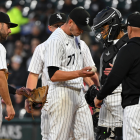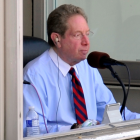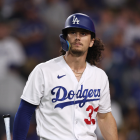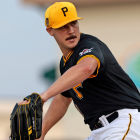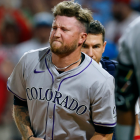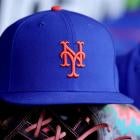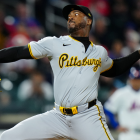Effortless velocity has a lot of names -- easy cheese; easy gas; easy heat -- and a lot of aesthetic appeal. You don't need to be a manager to enjoy watching a pitcher dispense 98 mph fastballs with languid mechanics. (Though, to be clear, managers enjoy watching it, too.) But beyond looking cool, does the phenomenon hold any actual predictive value? Probably not.
The theory makes sense. If a pitcher can deliver premium velocity without exerting themself, then it probably speaks well of their kinetic chain. Accepting that, it doesn't take much to presume such pitchers will throw more strikes and perhaps stay healthier. Essentially, it's inverse of why teams sometimes shy away from those hurlers with high-effort mechanics under the belief that they'll get hurt and/or not throw as many quality strikes as their success requires.
Unfortunately, there isn't much evidence to support the theory. Instead counterexamples are abound. Matt Moore has always battled his command and has recently taken to battling his body; Sean Newcomb has walked five batters per nine in his career despite an easy-looking delivery; and Jaime Schultz can hit 96 mph without taxing his body -- yet he's 27 years old with 25 big-league appearances to his name. And so on. Looking smooth isn't enough. Or, as one scout told CBS Sports, "Our eyes can fool us into believing ease equals mechanical efficiency."
Still, while easy cheese may not hold predictive value, it is fun to watch. As such, we asked around to figure out which well-regarded prospects had the easiest gas. Some of those named included Mitch Keller (Pirates), Dustin May (Dodgers), Shane Baz (Rays), and Sixto Sanchez (Marlins). Before getting to the rest of the watch, let's enjoy a few of their deliveries:
Ah, yeah. That's the good stuff. Now, onto the rest of the league.
| Despite being a front-foot hitter, Jazz Chisholm is widely considered Arizona's best hitting prospect due to his well-rounded skill set. He's off to a miserable start in Double-A, but don't fret: he's 21 and played just 36 games in High-A, making this an aggressive assignment. | |
| Drew Waters doesn't get talked about as often as Cristian Pache, but he's a top-100 prospect who could arrive in Atlanta sooner than later. He entered the week hitting .333/.389/.515 in his first 15 games at Double-A. | |
| Ryan Mountcastle is hitting .288/.319/.545 with four homers in 18 Triple-A games. The questions with him are where he'll play (he has a substandard arm, making the left side of the infield a tough ask) and a swing-happy approach that could result in some ugly strikeout-to-walk ratios. | |
| Josh Ockimey is a defensively challenged first baseman hitting .239/.407/.543 in Triple-A. He should probably debut this season, but it's unclear how he fits into Boston's long-term plans. | |
| Trent Giambrone has six homers in his first 16 Triple-A games. He's 5-foot-8. Giambrone ought to reach the majors this season, likely slotting in as a swing-happy reserve with surprising pop. | |
| Jimmy Lambert doesn't get as much print as other arms in the system, but he's using his slider more this season and his high-speed, over-the-top delivery could slot in as a back-end starter before the end of next season. | |
| Aristides Aquino has a .978 OPS in Triple-A and is named Aristides Aquino. That's enough to earn him a mention here. | |
| You probably saw that outfielder Will Benson had a four-homer game. As cool as that is, his sky-high strikeout rate (38 percent) highlights the flaw in his game that prevents him from being regarded as a potential star. | |
| Terrin Vavra is a decent infield prospect with a fun line: .365/.485/.538 with 13 walks, 16 strikeouts, and 13 singles. He's probably a bench player in the majors. | |
| Casey Mize update: three starts, 18 innings, one run allowed, one walk issued, and 21 strikeouts handed out. He's probably about ready for a promotion, huh? | |
| Outfielder Chas McCormick isn't much of a prospect, but he's drawn 16 walks while striking out five times in 12 Double-A games. That's a neat trick. | |
| Kris Bubic was the 40th pick in last June's draft via Stanford. Predictably, he's dominating in A-ball, having fanned 27 of the first 62 batters he's faced. He has a quality changeup and a delivery that will remind some of Clayton Kershaw. | |
| Angels fans should exercise patience with Jahmai Jones and Jordyn Adams. Both have struggled, but each has the potential to be a high-quality player down the road. | |
| Dustin May is one of the pitchers most often named with regards to "easy gas." | |
| Understandably, given he's transitioning to a new culture and way of living, Victor Victor Mesa's professional career hasn't gotten off to a great start. His upside is often compared to Cubs outfielder Albert Almora Jr. | |
| Payton Henry is a fine catching prospect with above-average defense and power potential. He's sporting an .823 OPS, too -- that despite striking out 30 times and walking just twice in 71 plate appearances. That's hard to do. | |
| Minnesota netted right-hander Jorge Alcala in the Ryan Pressly deal, and boy he's making them look smart so far. In four Double-A starts he has an 8.33 strikeout-to-walk ratio thanks to a big fastball. | |
| You're not going to find Dedniel Nunez on any prospect lists, but the Mets farm system doesn't offer much right now so we're giving the hard-throwing righty the nod. He's struck out 25 batters and walked three in 16 innings in A-ball. | |
| With Gio Gonzalez opting out, that makes David Hale the oldest starter on the farm. Don't laugh, but he's mildly interesting thanks to added velocity and spin. | |
| Las Vegas is a tough environment for pitching. Just ask Tanner Anderson, who the A's acquired for depth purposes. He's allowed 21 hits, 13 runs, three home runs, and nine walks in 16 ⅔ innings. Yeesh. Hang in there, Tanner. | |
| Cole Irvin has a starter's body and could step into a big-league rotation at any moment. Alas, his arsenal is average-at-best and he's striking out fewer than four batters per nine in Triple-A. | |
| Mitch Keller is another pitcher praised for his easy gas. He had an encouraging start last time out, striking out eight in six innings -- each a new season-high. | |
| We've touched on Ryan Weathers before -- he's a polished teenage arm who could move quickly. Right now, he's proving it by dominating A-ball to the tune of a 2.16 ERA and 11 strikeout-to-walk ratio. | |
| Sean Hjelle is the rare pitcher who can boast a 6.33 strikeout-to-walk ratio and not have it match or exceed his listed height (6-foot-11). | |
| The big return on the Robinson Cano-Edwin Diaz trade, Jarred Kelenic is hitting .300/.408/.450 in 15 games of A-ball. | |
| Former first-round pick Jake Woodford is having trouble missing bats against Triple-A hitters. He's young, but unless the stuff picks up it's hard to see him living up to his draft stock. | |
| For an example of Woodford's downside, consider Andrew Moore: he's permitted 27 hits and 23 runs in 14 ⅔ innings. | |
| Things Samuel Huff has: six home runs, a 1.037 OPS. Thing he doesn't have: a walk. He's fanned 21 times but taken zero free passes in 54 trips to the plate. | |
| On the flip side, Nate Pearson has struck out 20 and walked one. He's the best pitching prospect in the system thanks to his large frame and big arm. | |
| J.J. Hoover used to be an effective middle reliever. He's now someone who has issued 10 walks in 10 Triple-A innings. He also has 10 strikeouts. Maybe 10 is his favorite number? | |








































